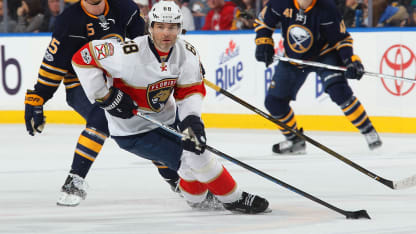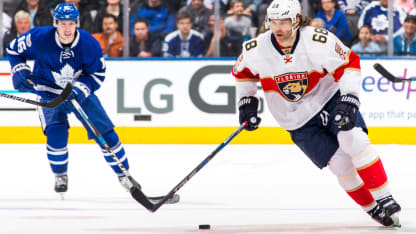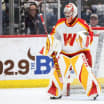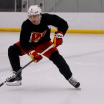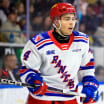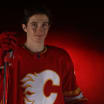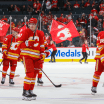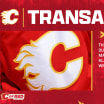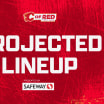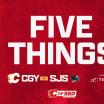CF% - Corsi For Percentage. Corsi is all shots on net, blocked shots, and missed shots, added together (basically, shot attempts). CF% is (Corsi For)/(Corsi For + Corsi Against). A CF% of 50% means a player has broken even; a CF% above 50% means he's a positive possession player, which is desirable to teams.
Relative CF% - CF%, but compared to the rest of the player's team. A positive relative CF% means that when a player was on the ice, his team did better than when he was off of it; a negative relative CF% means that his team was worse when the player was on the ice. It is used to differentiate whether a player was being carried by a good team or not; for example, a player can have a CF% over 50, but still have a negative relative CF%, meaning that even with the positive possession number, his team still perfors better without him on the ice.
iCF - Individual Corsi For. Every Corsi event an individual player has contributed to.
GF% - Goals for Percentage. Similar to CF%, GF% measures how many goals a player was on the ice for, versus against. It is (Goals For)/(Goals For + Goals Against). Like with CF%, 50% is breaking even, and above 50% means the team has been outscoring the opposition when the player on the ice.
Relative GF% - Same as relative CF%, but with GF%.
Zone Start Ratio - The percentage of zone starts a player experiences. Every faceoff occurs in one of three zones, and it can be telling when the coach chooses a specific player to take an offensive zone, or defensive zone, faceoff. Zone start ratio only pays attention to offensive and defensive zones. It is (Offensive zone start)/(Offensive zone start + defensive zone start). A ratio of 50% means the player is starting equally in both zones. Above 50% means he is starting more often in the offensive zone than the defensive zone.
